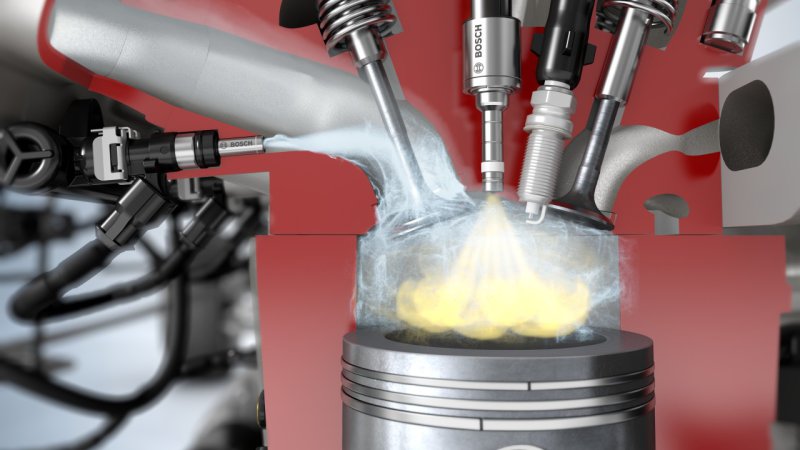There are two major differences in what's going on with either engine.
The Crower engine design utilizes six-strokes to accomplish what it's doing. It uses the extra two strokes to create an extra power stroke (so you'll have two power strokes per three revolutions of the crankshaft instead of the Otto cycle's single power stroke for every two turns). The idea is to utilize the heat energy which is already there, which would otherwise be going out the tail pipe or getting syphoned off through the radiator. Water is being used all the time to accomplish this.
What BMW is using water for is more the typical idea of water injection. That being it is using it to control detonation in the cylinder. Unless the engine needs it under stressful situations, the water isn't going to be used. Then when it is used, it's only used sparingly ... just enough to ensure detonation is squelched. This allows for higher power outputs from the engine without fear of killing the engine.
For a little background on why using water is so good in either situation, there are several reason:
- Expansion rate of water as it turns to steam. At 300°C water will expand at a rate of about 3300:1. My understanding is this is far in excess of the expansion of air/fuel as it's burned. Also, if you go hotter with steam, it will expand more.
- Water as it turns to steam tends to clean the combustion chamber and cylinder. A clean engine is a happy engine.
- Water acts as a detonation reducer. This applies more towards the BMW way of doing things, but is still applicable. Water can in effect add around 10 points of octane to fuel (using the R+M/2 method). Instead of 91 octane fuel, you now have 101 octane fuel ... good stuff.
- Water in the induction system creates a more dense intake charge due to the absorption of energy. Water can suck up a lot of it. This again, applies more towards the BMW way of doing things.
- Since water injection reduces combustion temperatures, it greatly reduces the amount of Nitrogen Oxides (NOx) which is created when things get too hot. Of the three major pollutants which are commonly created in the combustion process (Hydro-carbons [HC] and Carbon Monoxide [CO] being the other two), NOx formations are probably the most harmful to air breathers like you or me.
There are probably more reasons, but these are a few of the good ones.


Now water injection isn't a new concept;It is not, that is true: It has been in use in aircrafts even predating WWII to provide a performance boost.